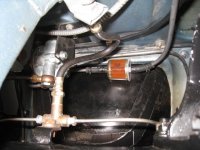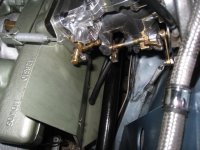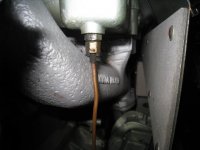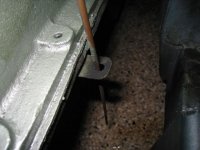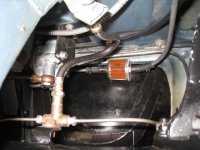Ray, thanks for sharing what Dave DuBois recommends. Interesting logic, that I need to look into more.
"if the filter clogs to the point where it will not allow fuel to pass through it, the pump will stall in a current on condition". If the circuit is left on too long, as in a diagnostic session, the SU coil’s swamping resistor, part of its suppression circuit, will burn out and cause permanent damage to the pump.
If the before the pump filter clogs, the pump will start pumping faster and faster, the engine will shut off letting you know it's not getting petrol. No different than if there is no inline filter before the pump, you hear the pump clicking faster and faster telling you the tanks about out of petrol. Of course you don't want the pump to keep pumping in either example, just pointing out that the pumps fast clicking will let you know no petrol is getting through, and of course the engine will shut off. At that point you turn the key off, which turns the pump off.
Now putting a filter after the pump, if that filter clogs, the engine would shut off too, being no petrol to the engine. The pump should stop working at that point because it thinks the line is full of petrol, so that's a good thing and a reason why one would put a filter after the pump. Either way, your driving and the engine stopped. Pull over and turn the ignition off, which stops the pump.
If the filter inside the pump is designed to stop rocks and small birds, what good is the filter. And how did those birds get in the gas tank anyway...lol
One could say the putting a filter before the pump would stop the small debris from passing through the pump, if the pumps mesh is that large. I did find debris in one of my carburetor screens, that got pass the pumps screen, that it affected the running of the car. After that, I added the aftermarket inline filter.
Question, should the pump filter be checked occasionally to see if it's starting to collect enough debris that it would eventually clog? There's a reason to put a filter before the pump, then you should not have to check the pumps filter.
I placed a filter between the tank and pump (before knowing what Dave DuBois recommends) that is easy to get to and I change it with every oil change. My filter has a clear plastic housing that shows me what it has trapped, which is always very fine, and a very small amount. If one were to see a lot of debris in the aftermarket filter, then the tank should be taken out to find out what's going on, like Dave DuBois mentioned. I have an electronic SU pump and thought that anything I can do to keep clean petrol headed it's way, is better than having it pass through or accumulate in the pumps filter. Maybe I should rethink this, per Dave DeBois. I appreciate sharing of views, for my views (some, well maybe more than one, and I'll deny it) are not always the smart ones.
Cheers,
Roger

 Hi Guest!
Hi Guest!

 smilie in place of the real @
smilie in place of the real @
 Pretty Please - add it to our Events forum(s) and add to the calendar! >>
Pretty Please - add it to our Events forum(s) and add to the calendar! >> 
